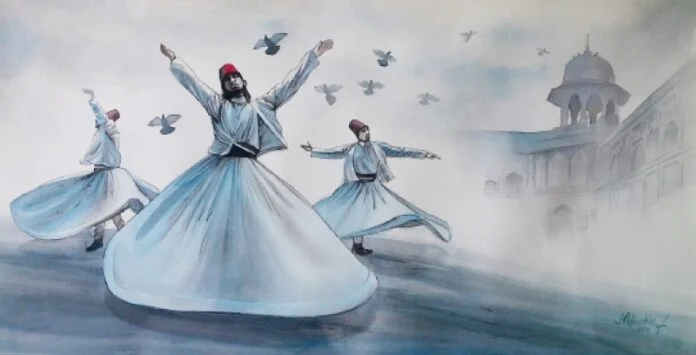
Sufism is said to be the divine tradition of Islam but it more of an experience and a way of life in which one ought to root out a deeper identity which is far beyond the personality that one already has.
Sufism as a traditional belief and faith in Allah is practiced by tens of millions of Muslims around the world. Sufis spiritual learning(Tariqas) can be found in Sunni, Shia and other Islamic groups. Historically, Sufism was not conceived as separate religion from the essence of Islam but the only difference is that its followers believes that they can be closer to Allah through inner reflection and purification.
It is believed that Sufism originated after the death Mohammed in 632, but was not develop into orders until the 12th Century. Sufism as a religious practice spread around the Muslim world from peoples’ of Indonesia and South Asia to Africa and the Balkans.

Sufism followers constantly meditates and receives guidance from their spiritual leaders known as “murshid”. Sufis believes that they can gain Islamic knowledge more from their teachers heart than from those books.
The fundamental component of Sufism practice the rite of dhikr, which involves constant, meditative remembrance of God, done both communally and individually. Other ritual includes fasting and prayer, celebration of the Prophet Muhammad’s birthday and visitation and performance of rituals at shrines and graves.
Sufism consists of four different stages, shari’a (exoteric path), tariqa (esoteric path), haqiqa (mystical truth) and marifa (final mystical knowledge, unio mystica). Sufi practitioners pray five times a day and mist visit mecca once in their lifetime like any other Muslim.

Sufi Whirling is a famous spiritual dance practice in which performer wears traditional dress and spins in circles as a part of meditation through which Sufis seek to commune with the divine. This Whirling practice is famous around Middle East and Turkey. The beautiful traditional dress includes a long white robe with a matching jacket and a tall felt cap, also called a ‘sikke’.
The etheral meaning of this dance practice by raising their arms they are begging for mercy from God and sending a prayer to the heavens and by placing their hands against their chest is a sign of submissiveness and humility before God.

